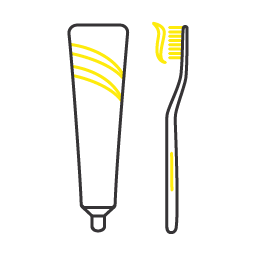In this current landscape, things are constantly changing and it does feel like we are being drip-fed information … that’s because, in a way, we are. The government authorities have certainly got their work cut out for them.
There has been a stack of information updated by the Fair Work Commission so we have pieced together as much of it as we can to simplify it for you.
Leave Update
The Fair Work Commission has confirmed that 99 Modern Awards now offer the following arrangements to employees from 8 April until 30 June 2020;
- Unpaid Pandemic Leave
- Annual leave at half pay
How Unpaid Pandemic Leave works
If an employee is prevented from working, as a result of required self-isolation, acting on medical advice, or an enforceable government direction restricting non-essential business they can take up to 2 weeks pandemic leave.
- The leave period can be extended by agreement with the employer.
- Full-time, Part-time and Casual employees can access this leave and it is not pro-rated.
- There are no accrual requirements to this leave, the employee can take the leave immediately
- The leave needs to have started before June 30, 2020.
- This leave counts as service and therefore normal accruals take place (ie annual leave and sick leave) during the leave period.
- Employees do not have to use their paid leave before being able to access unpaid pandemic leave
If you have leave policies and procedures in place, this is a good time to update them or at least do a review and make sure your employees understand their obligations to you, such as;
- The employee must notify their employer as soon as possible and indicate how long they will be on leave. This can happen as the leave commences. You are likely to already have some of these processes in place to manage personal leave. It is a similar situation, like sick leave, an employee notifies the employer the day they are sick.
- An employer can ask for evidence to show why the employee is taking the leave. If the employee has been advised by a medical professional to self-isolate, you as the employer can request a copy of the medical certificate.
Annual leave at half pay
Employees can take annual leave at half-pay to extend the leave when in agreement with the employer.
This simply means, an employee is paid for one week of leave (including loading where applicable) and they take two weeks off.
- The agreement must be in writing and the employer needs to keep a record.
- Leave must start before 30 June 30 2020.
Again, this is a good time to review your leave policies and procedures. If there is an expectation that notice is given before an employee takes a block of leave, now would be a good time to remind your employees of the process.
Please be very aware that you cannot dismiss or alter an employee’s position, while they are on leave.
JobKeeper Allowance
In relation to your employees, the biggest thing on the hit list right now is the JobKeeper allowance. From the accounting perspective and to understand your eligibility please take a look at this article along with chatting with your accountant to review your figures or go to the Treasury fact pages.
If you are an eligible employer, whether it is now or in the short term future, there are new temporary provisions directly relating to the JobKeeper allowance that will assist you. These provisions are currently in place until September 28, 2020.
You now have the ability to give directions called ‘JobKeeper enabling directions’. This means that for a period of time, while the JobKeeper allowance is available, you can
- Stand down an employee (including reducing their hours or days of work)
- Change an employee’s usual duties
- Change an employee’s location of work
The new provisions also enable you to make agreements with your employees to
- Change an employee’s days and times of work
- Take annual leave under certain circumstances
Let’s look at reducing hours in more detail….
Direction to reduce hours or days of work – JobKeeper enabling stand down directions
- An eligible employer can direct an employee to work fewer hours or days (including no hours) as long as;
- The employee cannot be usefully employed for their normal days or hours, due to changes in the business that have occurred because of the coronavirus pandemic, OR
- government initiatives to slow transmission have been directed (e.g. the closing of cafés and restaurants)
- Ensure that you implement this direction safely and having regard for the nature and spread of the coronavirus
- Make sure that the direction is not unreasonable and take into account all of the circumstances that might be in play (having good conversations with your employees is an absolute must).
- Give the employee notice before issuing a direction and provide the direction in writing. Any discussion you have with your employee (in consultation) should also be recorded.
Note: Employees still accrue their usual leave entitlements on a stand down and their service is continuous in relation to redundancy, long service and notice periods.
Also remember that the employee must receive the full $1,500.00 a fortnight, before tax, regardless of your direction.
If an employee usually earns less than $1,500 before tax, prior to this situation, they still receive the full $1,500.00 before tax.
If an employee usually earns more than $1,500 a fortnight, you have reduced their hours by some, but they still earn over the $1500, you are still obligated to pay the gap.
Please note that you cannot reduce an employee’s base hourly rate.
Here is an example
An employee usually works 38 hours a week, they are paid $28 per hour and their fortnightly wages are $2,128. You can subsidise their wages with the JobKeeper allowance meaning that you will pay them the difference of $628 for the fortnight.
If you reduce the employees hours to 30 hours a week, they will be earning $1,800 before tax for the fortnight and therefore after applying for the JobKeeper allowance, you would be paying the difference of $320 per fortnight, before tax.
If you were to reduce the employees hours to be in line with or less than the $1,500.00 JobKeeper allowance, ensure that their hourly rate remains unchanged, that they still accrue leave as per usual (as if they were full-time employed) and you pass on the full $1,500.00 (before tax) to the employee.
Finally, let’s also take a look at Annual Leave
- You can request an employee to take paid annual leave (as long as they can keep a balance of at least 2 weeks) This is an agreement between the employer and the employee, this is not a direction.
- The employee has to consider the request and cant unreasonably refuse it.
- It is important that the employee agrees and that you have this in writing.
- An employee is also able to take annual leave at half their usual pay for twice the length of time.
One of the biggest things coming out of this pandemic is the need to communicate and discuss things with your employees, more than you probably ever had. This situation will affect each person differently and the more you understand how it is affecting your employees and their individual situation, along with being aware of changes, you will weather this storm. If you feel you further need advice or want to discuss a scenario, after reading this information, please do not hesitate to contact us.























































